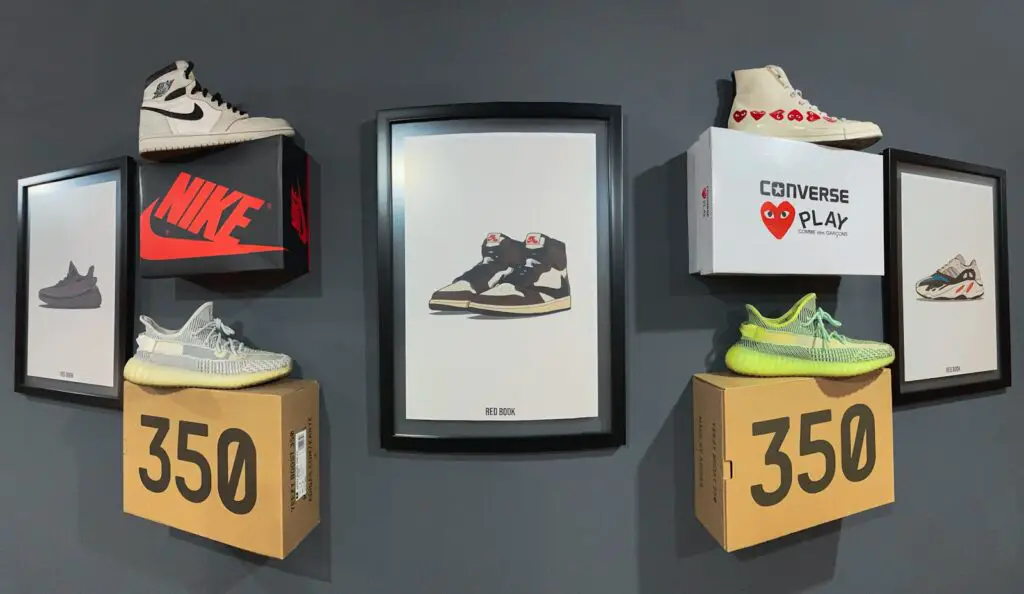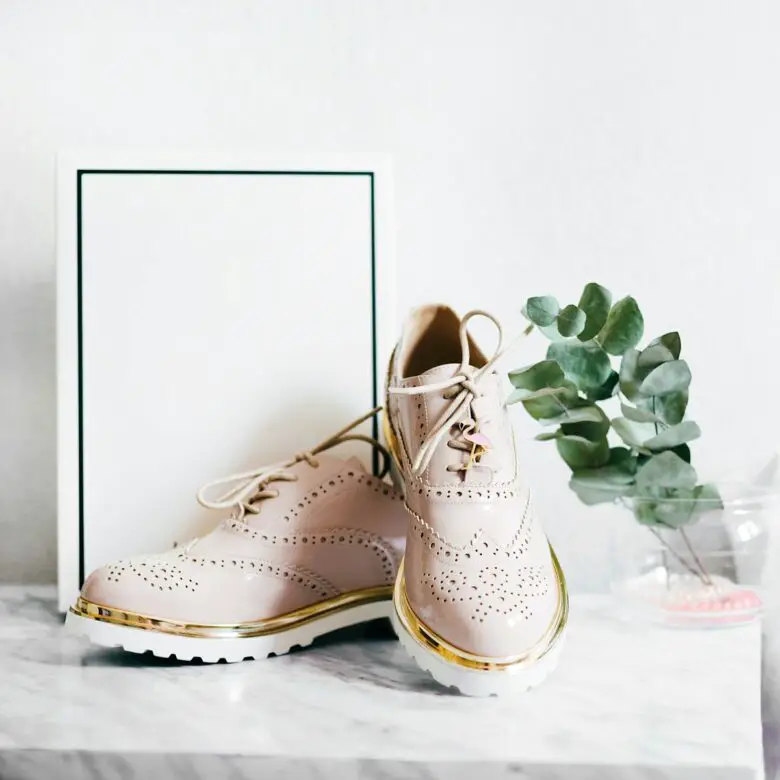Ever wondered how you could turn your love for sneakers into a lucrative side hustle? Reselling shoes might be the answer you’re looking for. Dive into the world of reselling shoes and unlock the potential to make some serious cash by leveraging your passion for footwear. Stay ahead of the game, snag exclusive releases, and watch your bank account grow as you navigate this exciting market. Ready to step up your sneaker game and your income? Get ready to explore the ins and outs of reselling shoes in this comprehensive guide.
Key Takeaways
- To succeed in sneaker reselling, start by researching popular brands and styles to understand market demand.
- Build a diverse shoe inventory by sourcing limited-edition releases, collaborations, and trending models to attract a wide range of customers.
- Understand aftermarket value by studying resale prices on platforms like StockX or Goat to gauge potential profits.
- Implement effective buying and reselling strategies such as entering raffles, camping out for releases, or using online bots to secure in-demand shoes.
- Manage your inventory efficiently by keeping track of purchase prices, market trends, and customer preferences to optimize profits.
- Avoid fake products by carefully inspecting shoes for quality, checking authenticity tags, and purchasing from reputable sources.

Starting Your Journey in Sneaker Reselling
Research Trends
To kickstart your sneaker reselling venture, delve into the latest market trends. Stay updated on new releases and popular collaborations to understand what sells well.
Setting Up Accounts
Create accounts on renowned reselling platforms like GOAT and StockX. These platforms have a vast audience base and ensure secure buyer-seller transactions.
Pricing and Negotiation
Analyze historical data on resale values to master the art of pricing. Then, learn to negotiate effectively with buyers to maximize your profits while keeping them satisfied.
Building an Efficient Shoe Inventory
Reliable Suppliers
Establishing connections with reliable suppliers is crucial in acquiring popular and limited-edition sneakers. By partnering with trustworthy sources, resellers can access exclusive releases and maintain a steady inventory flow, ensuring a competitive edge in the market.
Market Trends
Keeping track of market demand and supply trends is essential for successful shoe reselling. Understanding which styles are currently trending and monitoring price fluctuations allows resellers to make informed decisions. By staying updated on consumer preferences, resellers can optimize their inventory selection.
Inventory Management
Efficient inventory management involves organizing shoes by brand, size, and condition. Categorizing inventory enables resellers to locate specific pairs quickly when fulfilling orders. Regular audits help ensure that stock levels align with market demands, preventing overstocking or shortages.
Understanding Aftermarket Value
Factors Influencing Resale Prices
Understanding the factors that influence resale prices is crucial when it comes to reselling shoes. Brand popularity and limited edition releases often drive up prices, while general release models may not fetch as high a price. Condition plays a significant role, with brand-new or lightly used shoes commanding higher prices.
Analyzing Historical Sales Data
Analyzing historical sales data for different shoe models can provide valuable insights into trends and demand. By studying how certain models have performed in the past, resellers can make more informed decisions about which shoes to invest in for future resale. For example, iconic collaborations like Nike x Off-White consistently show a strong aftermarket value.
Staying Updated on Collaborations and New Releases
Staying updated on collaborations and new releases is essential for resellers who want to stay ahead in the game. Watching upcoming sneaker drops and potential collaborations allows resellers to anticipate which shoes will likely have a high resale value. For instance, partnerships between popular brands and celebrities often result in highly sought-after sneakers.

Strategies for Buying and Reselling
Pricing Strategy
When reselling shoes, developing a pricing strategy that aligns with market demand is crucial. Research current trends and profit margins to set competitive prices, and consider factors like brand popularity and shoe condition.
When reselling, utilize social media platforms and online forums to reach a wider audience. Create engaging posts showcasing your inventory, highlighting unique features, and offering promotions. Engage with potential buyers by responding promptly to inquiries and comments.
Marketing on Live Selling Platforms
Live selling platforms have gained popularity for their interactive nature. Capitalize on this trend by hosting live sales events to showcase your shoe collection in real time. Interact with viewers, answer questions, and create a sense of urgency to drive sales.
Bundling Deals and Discounts
To increase your sales potential, offer bundled deals or discounts for bulk purchases. This strategy attracts customers looking for multiple pairs and helps move inventory quickly. Consider creating themed bundles or offering discounts for repeat customers.
Managing Inventory Effectively
Organizing System
Implementing a system to organize and track your shoe inventory is crucial for efficient reselling. Utilize storage bins, shelves, or software to categorize and manage your stock effectively. This approach helps you easily locate specific shoes when needed.
It is essential to regularly review and update your inventory list to ensure accuracy. Conducting frequent audits can identify any discrepancies, such as missing items or incorrect quantities. This practice also helps monitor sales trends and identify popular shoe models.
Optimize Storage
Optimizing storage space is key to preventing shoe inventory damage or deterioration. Store shoes in a cool, dry place away from direct sunlight to maintain their quality. Consider investing in shoe racks or clear plastic containers to maximize space usage and protect the shoes from dust or moisture.
- Efficient organization reduces overhead costs associated with excess storage space.
- Regular inventory reviews help in tracking spending on new shoe purchases accurately.
Identifying and Avoiding Fake Products
Verify Authenticity
When purchasing name-brand shoes, always verify their authenticity through official channels or authentication services. This step ensures that you are getting genuine products.
Quality Indicators
Check for quality indicators such as stitching and materials. Authentic shoes from reputable brands have high-quality craftsmanship, while fake products often exhibit poor workmanship.
Be Cautious of Deals
Be cautious of deals that seem too good to be true, especially on social media platforms like Instagram and YouTube. Scammers often lure buyers with unrealistically low prices or offers like a free trial, aiming to sell counterfeit products.
- Look out for suspicious signs, such as sellers asking for your email address or offering steep discounts on popular shoe models.
- Authentic sellers typically do not resort to such tactics and prioritize transparency in their transactions.

Expanding Your Sneaker Flipping Business
Diversifying Products
To attract a wider customer base, consider offering a variety of sneaker brands, styles, and sizes. This strategy can cater to different tastes and preferences.
Collaborating with local designers or artists can bring unique and exclusive releases to your business. These limited editions can create hype and increase demand among sneaker enthusiasts.
Exploring Collaborations
Partnering with sneaker conventions or industry influencers can help promote your brand and reach more potential customers. Attending events like these can also provide networking opportunities.
Considering platforms like Penny Hoarder for marketing can boost your visibility and attract more buyers. Utilize social media channels to showcase your inventory and engage with potential clients.
Expanding Internationally
Exploring international markets can open up new growth opportunities for your sneaker flipping business. Before venturing into new territories, research market trends, shipping logistics, and import/export regulations.
Expanding globally allows you to tap into a larger customer base and potentially increase your revenue streams. Look for emerging markets with a growing demand for sneakers.
Closing Thoughts
You’ve now gained insights into starting and growing your sneaker reselling business. By understanding aftermarket value, managing inventory efficiently, and spotting fake products, you’re equipped to elevate your game. Implement the strategies learned to expand your business further. Stay updated on market trends and continue refining your skills to stay ahead in the reselling game.
Remember, success in sneaker flipping requires dedication, knowledge, and adaptability. Keep honing your expertise, building supplier relationships, and delivering top-notch customer service. Your commitment and strategic approach will set you apart in the competitive world of sneaker reselling.
Frequently Asked Questions
How can I start my journey in sneaker reselling?
To start your journey in sneaker reselling, research popular brands and models, understand market trends, set a budget for initial purchases, and establish relationships with suppliers or online marketplaces. Building knowledge and connections will help you successfully kickstart your business.
What are some strategies for buying and reselling shoes effectively?
Effective shoe buying and reselling strategies include identifying high-demand styles, pricing competitively, offering excellent customer service, leveraging social media for marketing, and staying updated on industry trends. These strategies can maximize profits and build a loyal customer base.
How do I manage my shoe inventory efficiently?
Efficiently managing your shoe inventory involves categorizing products by brand or style, utilizing inventory management software, conducting regular audits to track stock levels, and optimizing storage space. Staying organized and monitoring inventory closely can prevent overstocking or running out of popular items.
What should I consider when expanding my sneaker flipping business?
When expanding your sneaker flipping business, consider scaling gradually to maintain quality service, diversifying your product range to attract more customers, investing in marketing efforts to reach a wider audience, and continuously evaluating performance metrics to make informed decisions. Strategic expansion can lead to sustainable growth in the long run.
How can I identify fake products when reselling shoes?
To identify fake products when reselling shoes, scrutinize details like stitching quality, logos, materials used, and packaging authenticity, and purchase from reputable sources. Educate yourself on common counterfeit indicators specific to each brand/model you deal with. Verifying authenticity ensures customer trust and protects your reputation as a reseller.















Leave a Reply